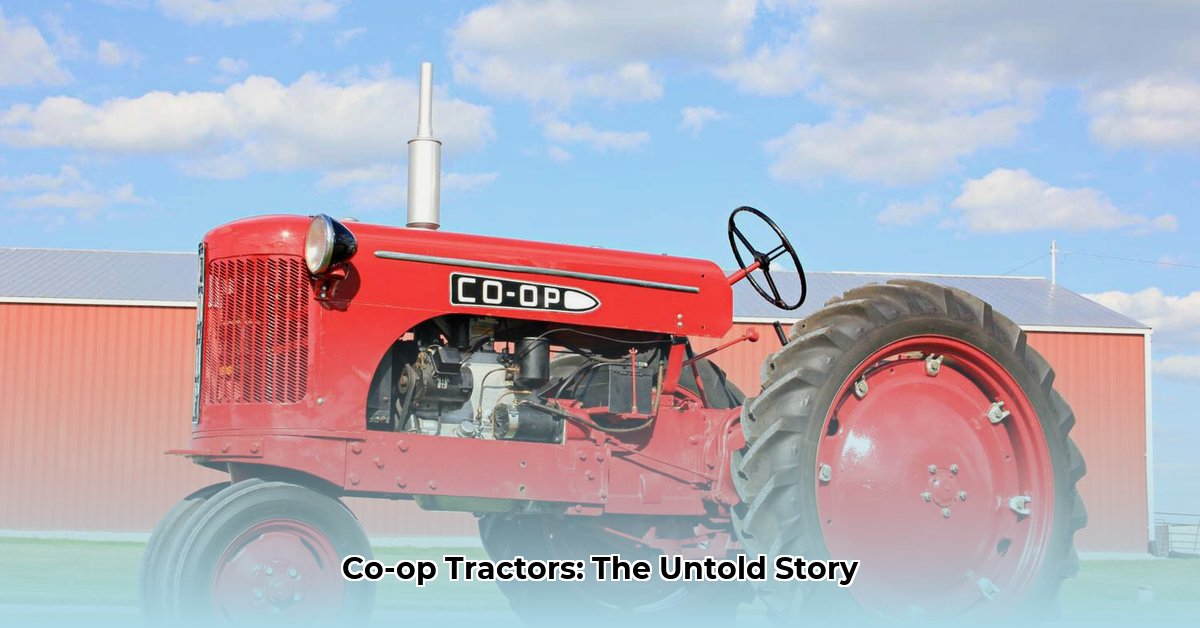
The story of co-op tractors is a compelling David-and-Goliath narrative, a testament to both the ingenuity of collaborative farming and the brutal realities of the agricultural machinery market. For sixteen years, these farmer-built machines disrupted the industry, offering a cheaper alternative and demonstrating the power of collective action. But their journey, like many entrepreneurial endeavors, was marked by both triumph and ultimately, a hard-won lesson in the complexities of manufacturing and marketing. This article delves into their inventive methods, relentless challenges, and eventual absorption, extracting valuable insights for modern agricultural cooperatives and businesses alike. For more vintage tractor information, see this great resource: Tractor history.
Imagine a time when farmers, weary of exorbitant prices from large manufacturers, decided to forge their own path. The mid-20th century witnessed the birth of this movement, spearheaded by visionary Dent Parrett, whose designs prioritized unwavering reliability and practicality over profit. These early co-op tractors were built "for service, not for profit," embodying the cooperative's ethos. They were dependable workhorses, designed to withstand the harshest farming conditions—and they did. But was this simple philosophy enough to survive the complexities of the market? That's where the story becomes truly fascinating.
Their journey wasn't without its difficulties. The initial partnership with various manufacturers such as Duplex Printing Press and Custom Manufacturing Corp. was a complex dance of shared resources and shared responsibilities. Managing contracts, production, and quality control across multiple entities presented immense challenges. Could a farmer-led cooperative successfully navigate the intricacies of large-scale manufacturing? As we see, this proved far more challenging than anticipated.
The Second World War dramatically reshaped the landscape. Resource scarcity and labor shortages severely impacted production. The wartime disruption highlighted the fragility of their decentralized network. This is further compounded by the post-war economic shift, creating an even more competitive market. Interestingly, their resourcefulness shone through; the clever utilization of readily available Chrysler parts demonstrated adaptability. However, this reliance on third-party components introduced inconsistencies in quality and reliability, a significant drawback.
Despite their robust builds, the co-op tractors lacked the marketing muscle of established giants. They couldn't compete with the established brands and extensive sales networks of industry behemoths. Sales consistently underperformed, a sobering reminder of strategic marketing's importance in reaching target markets. Even with a superior product, how can you succeed without consumers knowing about it? This points to a crucial lesson applicable to any industry.
By 1952, the co-op was acquired by Cockshutt, marking the end of an era. Yet, declaring it a complete failure oversimplifies the narrative. Their impact on agricultural history remains. They proved the feasibility of farmer-driven manufacturing, though its long-term sustainability proved to be a Herculean task.
What, then, are the key takeaways from this remarkable story?
The Power of Collaboration: The initial success demonstrated the immense power of collective action. Farmers' cooperatives, working in unison, can dramatically reduce costs and boost efficiency. This model offers enduring inspiration for those seeking to challenge traditional structures.
The Manufacturing Maze: Manufacturing's complexity often surpasses initial expectations. Supply chains, production hurdles, and technological advancements pose constant obstacles. The co-op's experience serves as a cautionary tale, underscoring the need to anticipate and plan for these complexities. Was their decentralization ultimately their downfall?
Marketing's Mandate: A superior product, regardless of its quality, requires a robust marketing strategy. The co-op's struggle underlines that branding and effective sales are paramount. This is a timeless lesson: a great product is only half the battle.
The saga of the co-op tractors is more than just a historical account; it’s a case study in innovation, cooperation, and strategic planning within the agricultural sector. It highlights the resilience of farming communities, their ability to adapt to market forces, and the critical lessons derived from both triumphs and setbacks. Their legacy—a testament to the spirit of collective endeavor—serves as both a cautionary tale and an inspiring example of what is possible when farmers band together.